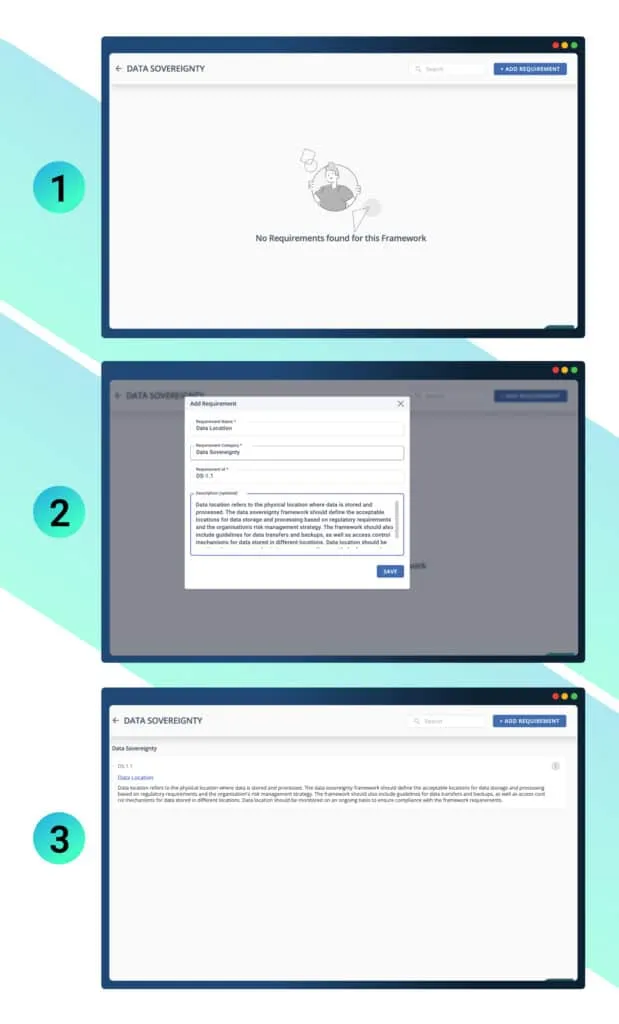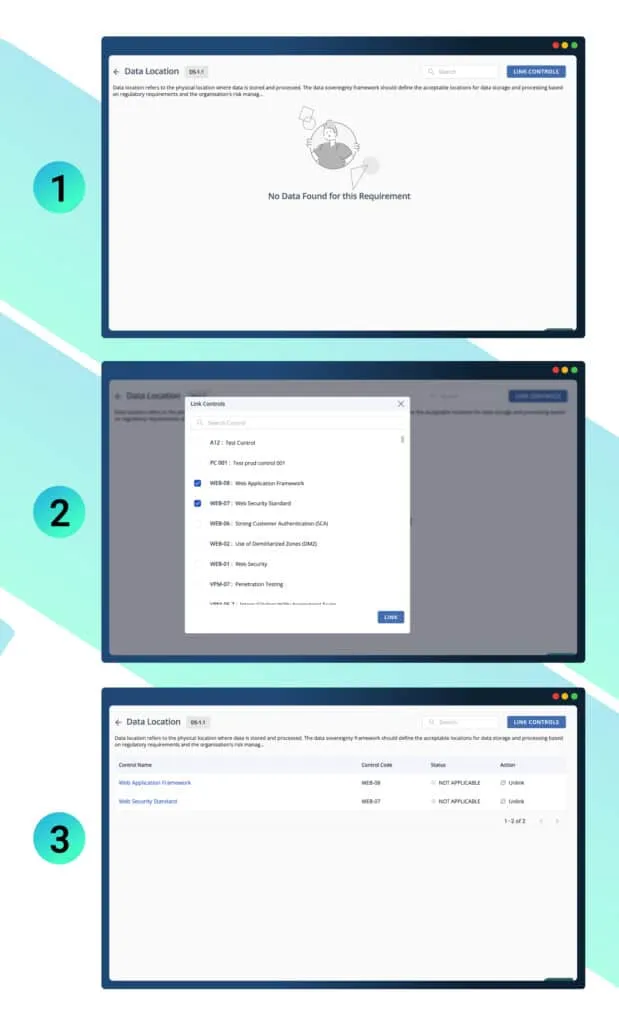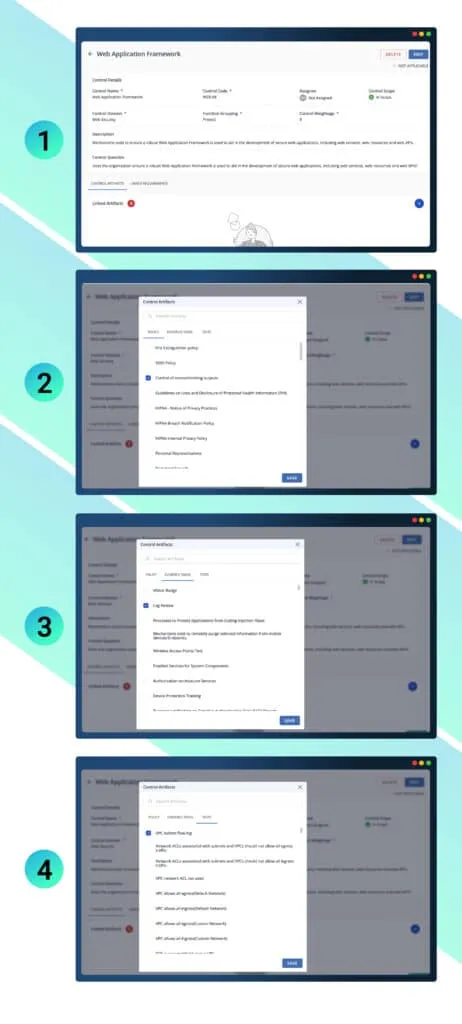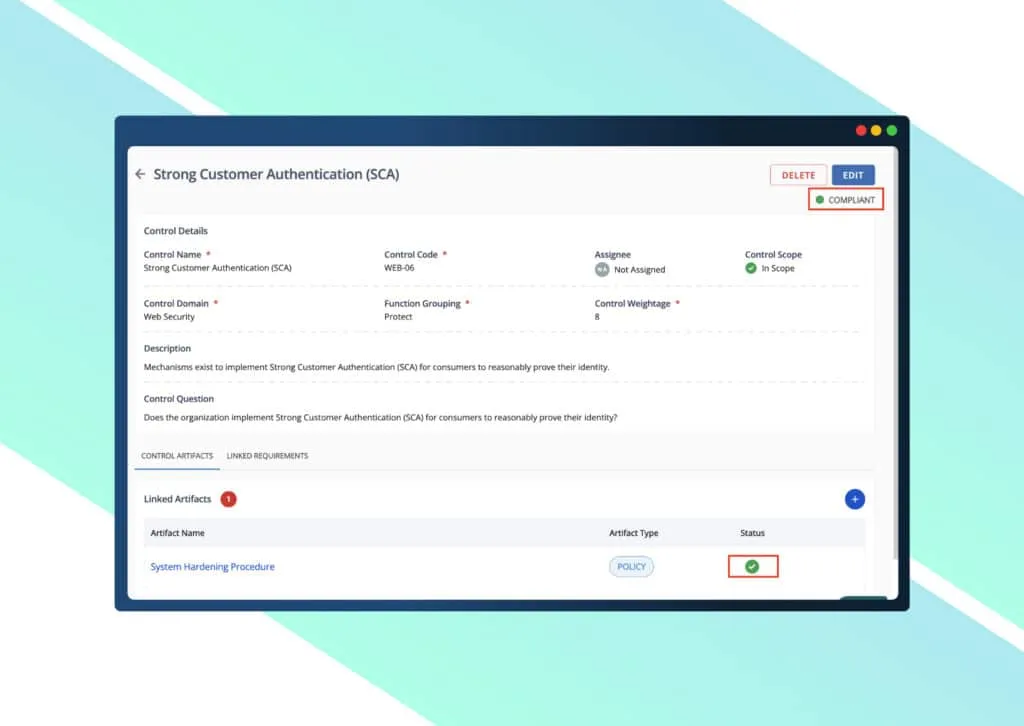Revolutionizing the Fintech compliance game with Regusense: A Unified Control Framework

The fintech sector is a dynamic space that is constantly advancing with innovative new technologies. This rapidly growing industry regularly witnesses new companies cropping up and redefining the new cashless ecosystem.
Another advancement that the fintech space is currently experiencing is the increasingly focused attention of regulatory bodies on cybersecurity regulations. More and more regulations are being introduced every other day, and while this attention to security is integral, it can weigh heavily on product growth for most organizations.
Since fintech companies deal with a lot of sensitive data, such as financial and personal data, and work with several clients and partners, it is required for them to be secure and reliable in handling data. But adhering to multiple standards is quite overwhelming, to begin with – add to this the complex nature of their respective requirements and the need to keep up with the ever-evolving frameworks – which results in fintech organizations having their hands full.
The laws and regulations that fintech companies have to follow are implemented by different regulatory bodies such as RBI, SEBI, and PCI SSC, among many others. The requirements of each of these bodies are presented separately, and they also tend to evolve frequently to address the increasing sophistication of cyber attacks, introducing new requirements into the mix.
While fintech organizations need regular audits from authorized bodies, many times, clients and partners of these fintech organizations might also have requirements for specific and timely audits. The sheer number of audits that these organizations undertake in a year can prove to be very taxing
This complexity could result in missed security parameters, redundant controls, and unending compliance cycles. Fintech companies face the risk of heavy fines, loss of reputation, and disruptions in their operations or growth if they do not comply with the necessary requirements on time.
Navigating through the convoluted and ever-expanding regulatory maze to avoid undesirable consequences is one of the biggest pain points for fintech organizations. Fortunately, fintech companies do not have to navigate this maze alone!
Introducing ReguSense: A common control framework for Fintech organizations
With Scrut’s new offering, ReguSense, fintech organizations have a one-stop solution for all their compliance needs. Organizations only need to implement this nifty new tool once, and the resulting control structure allows them to automatically comply with multiple standards at once.
With Regusense, CISOs, and other security leaders significantly simplify the compliance automation process.
What does ReguSense do?
In a roundtable conference that we organized recently, which brought together CISOs to discuss the growing regulations that fintech companies are faced with, it was unanimously agreed that there is a need for a unified approach that tackles all compliance requirements in one window.

This is exactly what ReguSense does. It is a unified control framework that helps fintech companies reduce audit overhead by eliminating duplicity in controls and in the evidence artifacts of that control.
ReguSense is a pioneering product that has a set of unified controls that are mapped to multiple frameworks and their requirements. These controls are pre-mapped not just to common IT security standards, such as SOC 2 and ISO 27001, but also to frameworks of fintech regulatory bodies such as RBI Cyber Security Framework, SEBI Cyber Security & Cyber Resilience framework, etc.
It also allows organizations to create their own custom framework according to their requirements by choosing from a pool of 25+ frameworks.
With a set of common controls for all frameworks, the effort required to manage individual artifacts of those controls (such as policies, evidence documents, remediation tasks, etc.) is also significantly reduced, allowing fintech organizations to focus on other important aspects of their business.
What makes ReguSense stand out?
ReguSense is the only out-of-the-box framework in the market that provides a unified solution, regardless of the type of fintech operations that an organization conducts.
ReguSense includes the most common audit reports in today’s industry, such as SAR Reports – Localization, SAR – Tokenization, and also the latest requirements, such as RBI’s Master Direction on Outsourcing IT Services.
It is built by experts who have performed over 3000 assessments and have 40+ years of combined experience to ensure that the controls are mapped in an accurate and effective manner.
Scrut’s expertise is also reflected in the control framework’s scalability. As the operations of an organization evolve or new updates are introduced by regulatory bodies, the company might need to add more frameworks. Regusense’s unified framework makes it all look like a piece of cake!
How does ReguSense work?
ReguSense has a user-friendly interface that makes it easy for teams to navigate and manage frameworks and controls.
Here’s a step-by-step look at how to use ReguSense.
25+ Most Commonly Applicable Frameworks
Step 1 – Create a framework
Navigate to the Frameworks page and click on create framework. You can then choose from a pool of 25+ most commonly used frameworks of today.
Step 2 – Control status from ‘Non-Compliant’ to ‘Compliant’
Once the linked policies and evidence are uploaded, and the tests have been passed, the control status will automatically change to compliant.
Custom Frameworks
If you’re a fintech organization, it is probable that other entities in the fintech value chain, such as your client/partners, might require specific cybersecurity guidelines to be followed. It could also be possible that you might want to impose specific guidelines for your company to improve your security posture, which is different from other existing standards. In such cases, you might want to add a custom framework.
Step 1 – Create a custom framework
To create a custom framework as per your organization’s requirements, enter the name of the framework and select a framework color. This will help you identify the framework visually in the future.

Step 2 – Add requirements
You can start adding requirements to your newly created framework by clicking on Add Requirement. Once you’ve entered the requirement details, click save. You can repeat the process for additional requirements.

Step 3 – Link controls
To link controls, click on a requirement and then click Link Controls. You can choose from an existing set of 600+ unified controls or create your own custom control. Once you have successfully linked a control, it will be visible under the requirement.

Step 4 – Link Artifacts
To link artifacts such as policies, evidence, and tests, click the + icon on the Controls page. You can then link the artifacts.

After linking them successfully, they will be visible under the Control Artifacts tab.

Step 5 – Control status from ‘Non-Compliant’ to ‘Compliant’
Once the linked policies and evidence are uploaded, and the tests have been passed, the control status will automatically change to compliant.

How can ReguSense help your organization?
Our development of ReguSense was driven by the proactive approach of fintech organizations to engage with the government while also expanding their product offerings.
ReguSense reduces the administrative time needed to implement and maintain multiple frameworks by offering structured content and guidance. It enables cross-standard mapping, and its framework requirements are updated regularly, eliminating the need to review updates manually. It is a super app for all your compliance needs.
This unified control framework’s evidence-collection mechanism is one of its standout features, benefiting both clients and partners. ReguSense can simplify the process of audits, allowing companies to address requirements with ease and without multiple resources, regular email correspondence, or ground-up evidence collection.
Additionally, ReguSense allows for the creation of custom frameworks to meet organization-specific requirements. This flexibility is essential for fintech companies that have unique business models and operating environments, especially in the current threat landscape. With ReguSense, organizations can create custom frameworks that align with their specific needs, ensuring that their compliance requirements are met in a comprehensive and efficient manner.
Explore how ReguSense can boost your compliance program today! Schedule a demo with us to learn more.



















